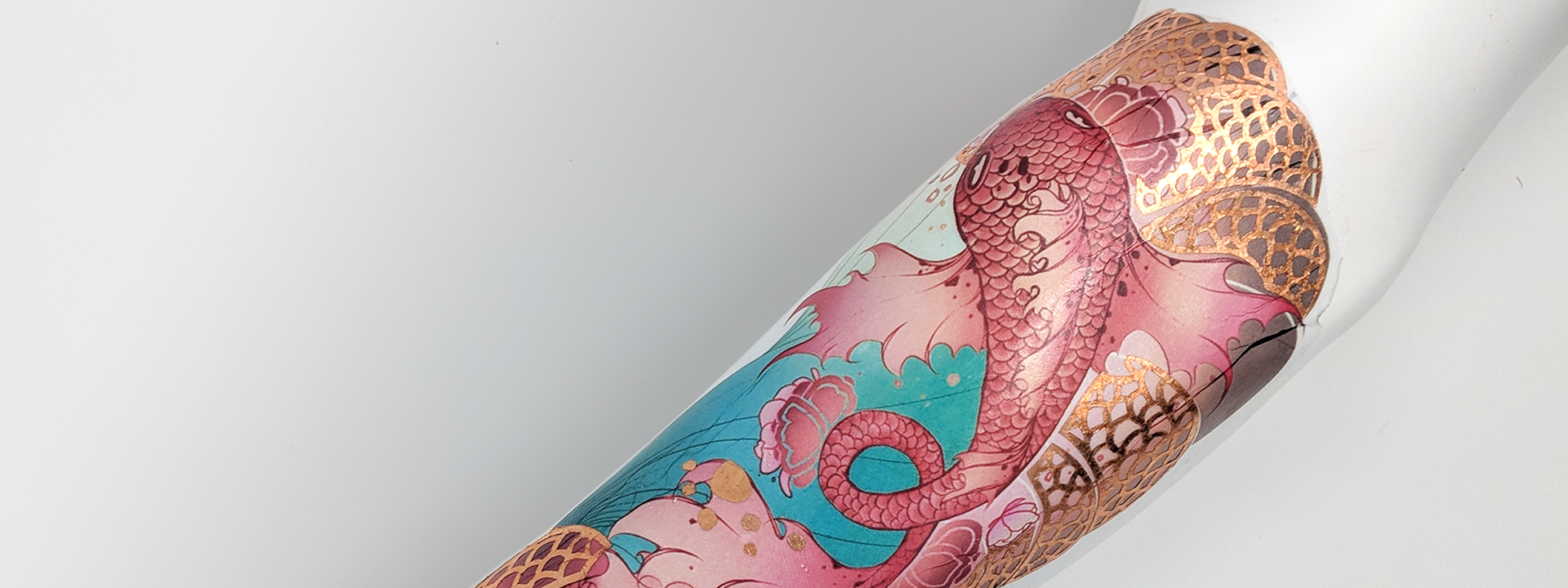DIY wearable circuitry
Smart Tattoos is an evolving project at Microsoft Research which builds on the idea of allowing people more control over their technology. Started in 2015 at Microsoft Research, this project was targeted at creating a DIY fabrication system for enabling people to make their own wearable electronic circuitry. At the time, there was a great deal of interest in making the fabrication of circuits more accessible to a wider segment of the population. This was being pursued through various means, such as the copper tape, conductive materials, and flex circuits method developed by Andrew Huang and Jie Qi’s Chibitronics Circuit Stickers (opens in new tab). Analisa Russo’s Circuit Scribe project launched a successful Kickstarter campaign to create Electroninks Inc. which creates Circuit Scribe kits (opens in new tab) based around a conductive ink pen to create electronic circuits on paper. Concurrently, Asta Roseway and peers at Microsoft Research, had been developing embedded technologies into softer wearable form factors and textiles to generate seamless sensing and actuating experiences.
Introducing Tattio and DuoSkin
After her publication of NailO, Cindy Kao from the MIT Media Lab was recruited as an intern to work with Ms. Roseway and her peers at Microsoft Research. The initial project focused on creating tattoos antennas which could be read by NFC tag readers inside smartphones, thermochromic ink tattoos, active circuits, and input/output methods such as skin wearable LEDs. This work developed the initial gold leaf fabrication technique which was described in the CHI 2016 demo paper, “Tattio: Fabrication of Aesthetic and Functional Temporary Tattoos (opens in new tab)”. After its publication, both Ms. Roseway and Ms. Kao continued to refine the Tattio work further to enable more graceful capacitive swipe, touch, and 2D interactions on the skin. In addition, the thermochromic and NFC work were refined to create better and more useful devices. This collaborative work was published at ISWC 2016 as “DuoSkin: Rapidly Prototyping On-Skin User Interfaces Using Skin-Friendly Materials (opens in new tab).”
Next Gen Smart Tattoos: For everyone
While DuoSkin (opens in new tab) was a great step forward it was still not an easy to use DIY circuit fabrication technique for users. The gold leaf fabrication technique was labor intensive, too delicate, and prone to developing circuit breaking cracks as the device was stretched and flexed on the skin. The next step in the Smart Tattoos project was to focus on the materials and use cases, to create something more accessible, and something which people could truly use for themselves. Towards this end we have created the next generation of Smart Tattoos. This generation uses more advanced, robust, and inexpensive materials to create electrical temporary tattoos for surfaces and eventually skin. There’s still more testing and refinement to be done, but our hope is to eventually be able to create materials which anyone can use to shape their technology to their needs, express their creative skills, and to spark people’s interest in electronics.

